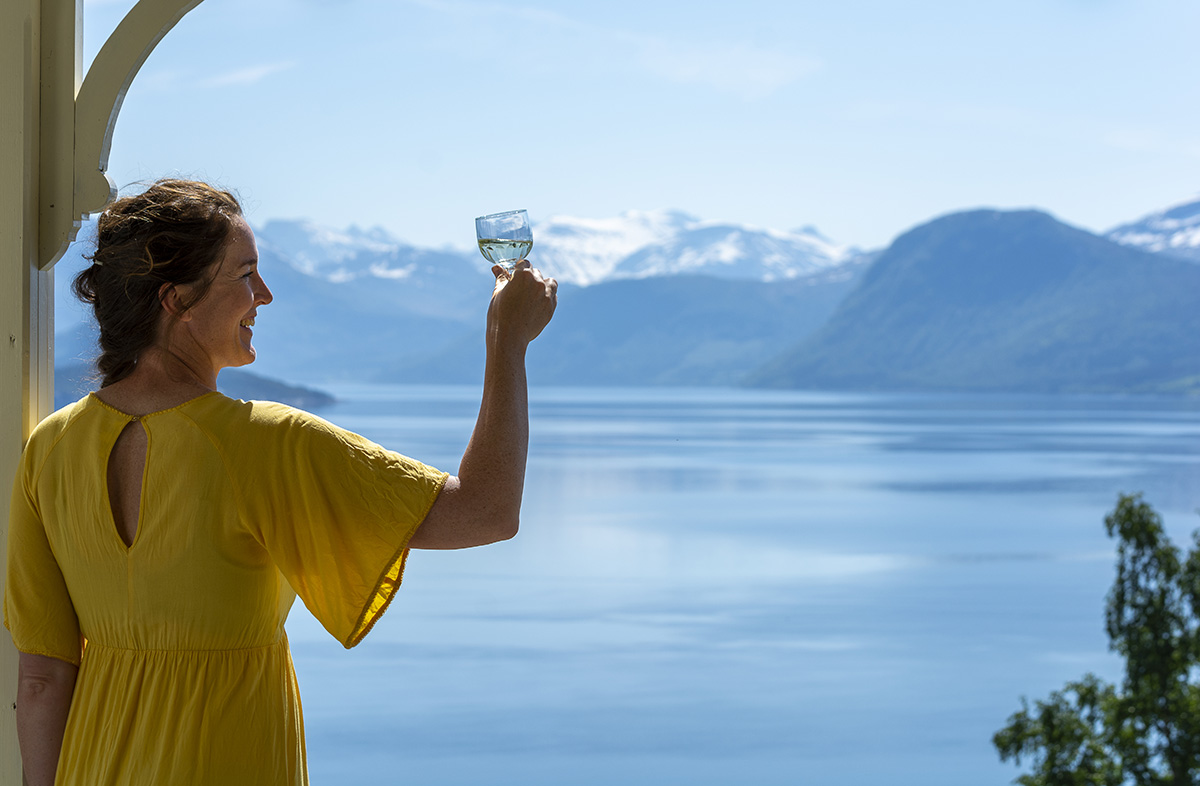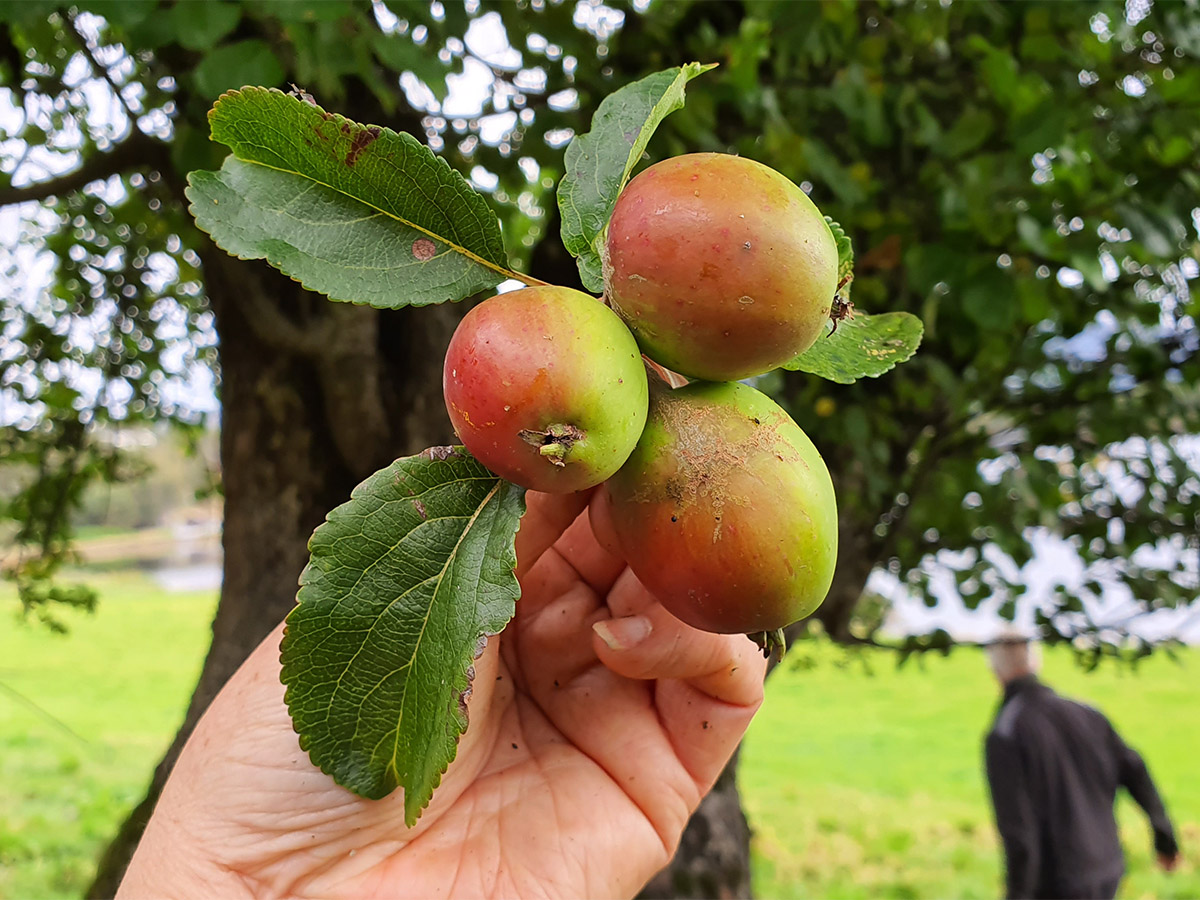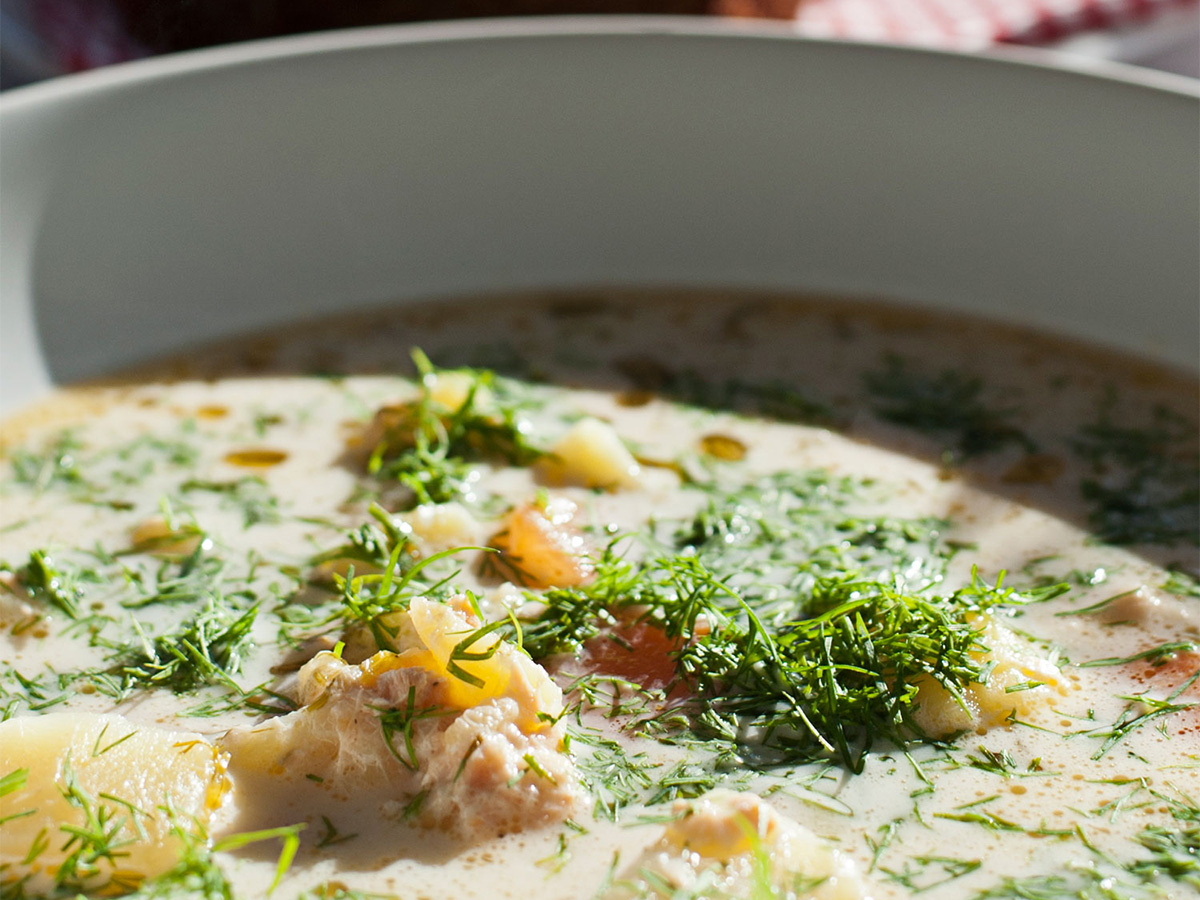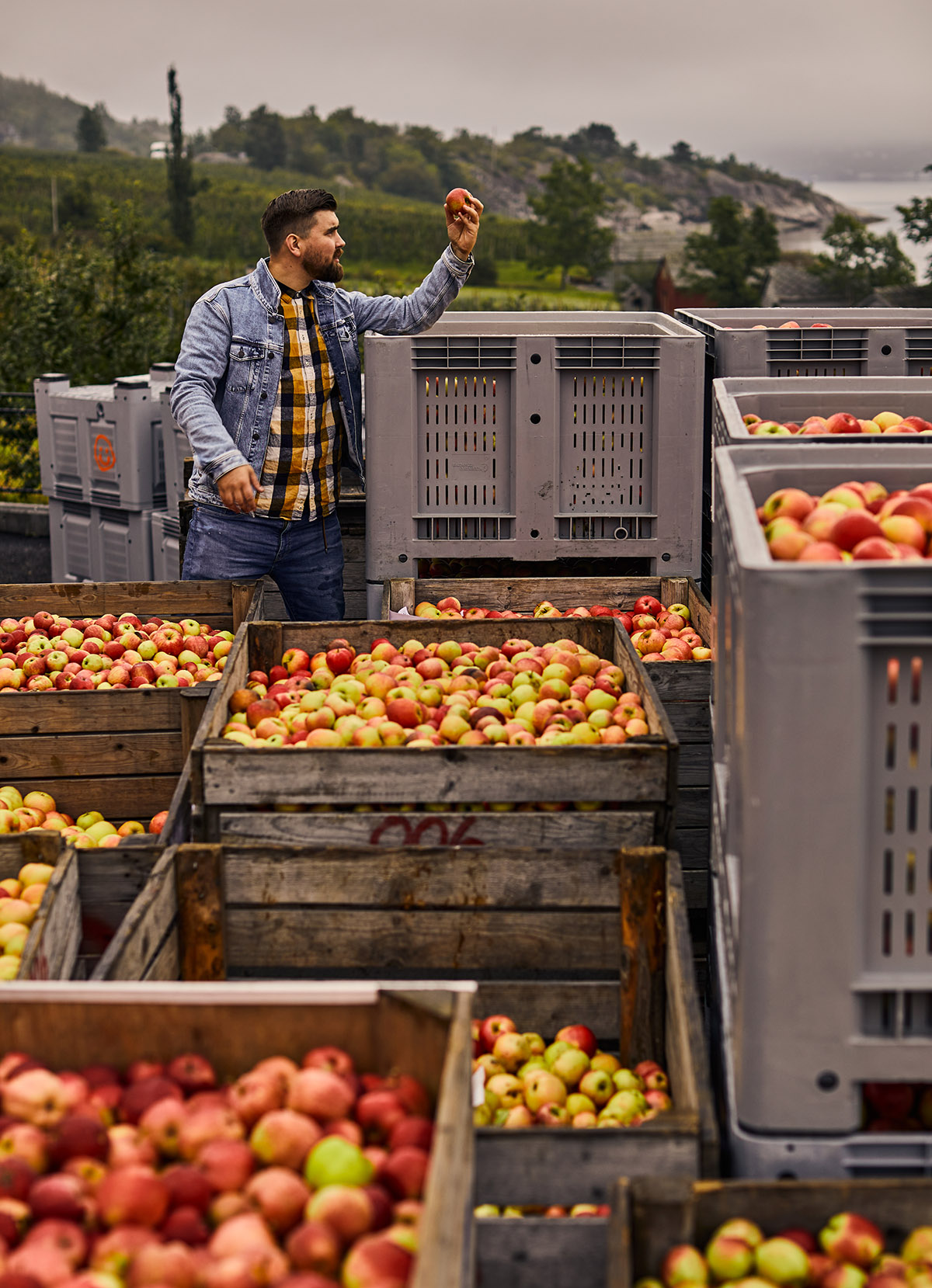Oslo Håndverksdestilleri: A botanical sip of Norwegian nature
TEXT: ÅSA H. AABERGE | PHOTOS: OSLO HÅNDVERKSDESTILLERI/OHD
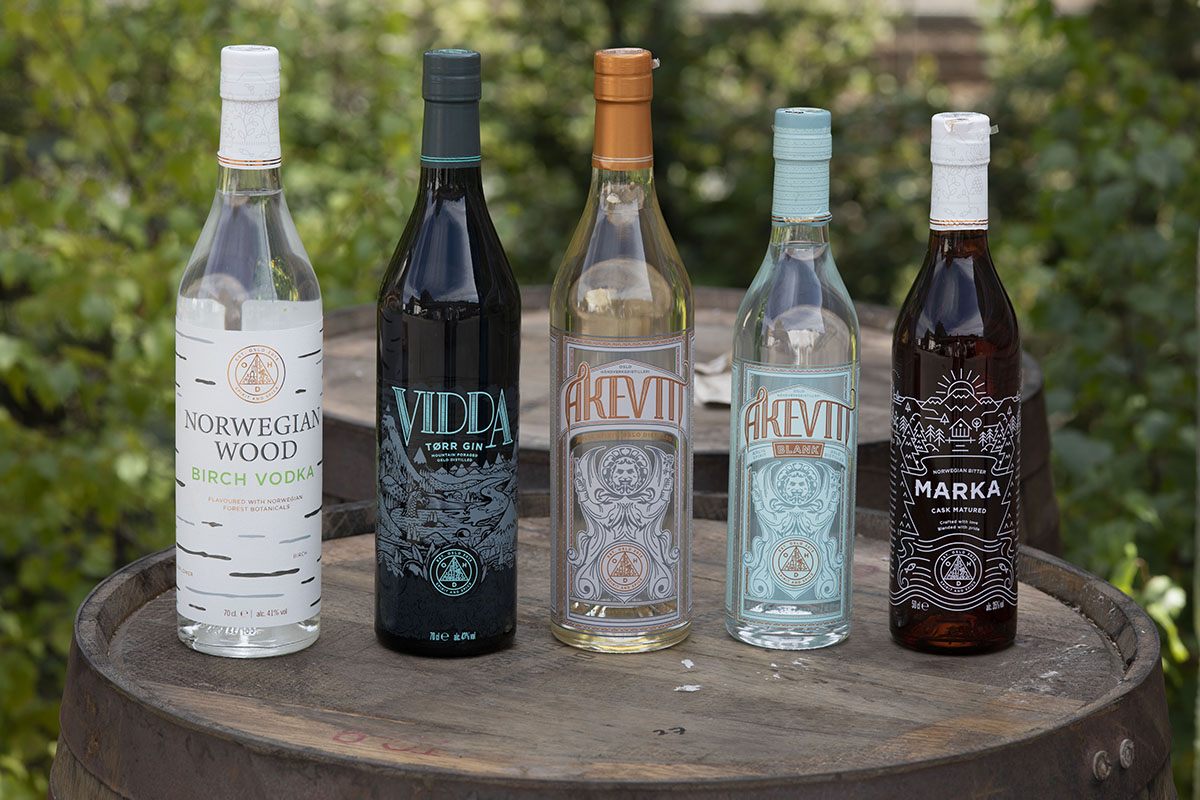
All products are constructed and produced in Bryn in Oslo.
For one of Norway’s most innovative independent distilleries, the goal is to create a pure taste of Nordic nature with its wild mountains, salty sea, green meadows and deep woods.
Norway has a long and rich liquor-making history. At one point, the country had thousands of registered distilleries. A ban on liquor, and from 1927 a state monopoly for distillation, put an end to the independent distilleries.
But in the early 2000s, small-scale distilleries started to bloom again. One of the first was Oslo Håndverksdistilleri (Oslo Handicraft Distillery, or OHD), founded in Oslo in 2015. “When we started, we began to look at the history of distilling in Norway. Historically, no one used the exotic spices common in aquavit today, like star anise and such. We started to play with the idea of making spirits using nothing but botanicals that grow naturally in Norway,” says Frederik Dahl, sales and marketing manager at OHD. “That idea became what separates us from the rest.”
A thorough research process began, to find out which herbs to use and how best to utilise them. “We visited old farms, found the oldest man on the farm and asked him what his grandfather used to make liquor back in the days,” Dahl explains.
Back in the laboratory, the OHD team experimented with different botanicals to find which recipes worked or not. “Spirits like aquavit, gin and whisky were historically known as medicine and called the water of life. Traditional medical plants were often used, so we ended up visiting a museum in Oslo where they still grow a lot of the traditional medicinal plants. That became the starting point for which plants we ended up using,” says Dahl. Today, OHD uses a variety of about 20 botanicals in total, in products ranging from aquavit to bitter, gin and vodka.
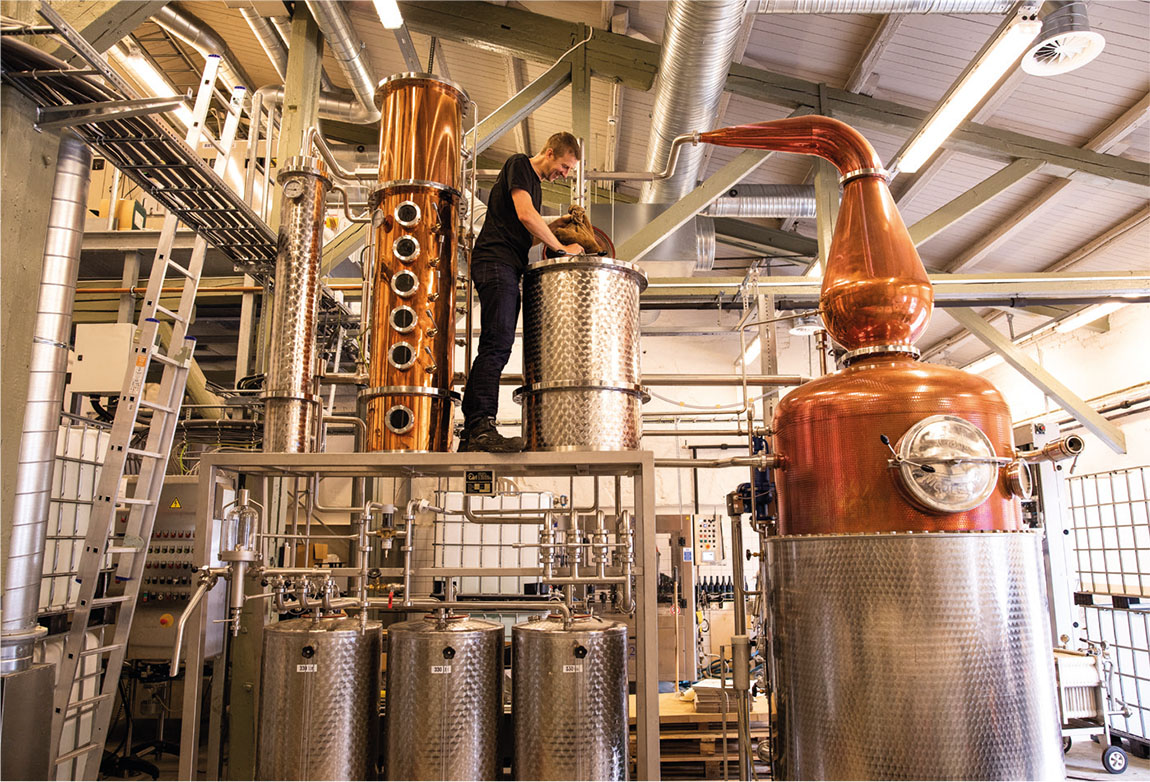
The world’s best gin
For OHD, it’s been essential to establish a unique signature taste. The taste of the botanicals gives a distinct character to the products, explains Dahl. “We have six or seven plants that make up the base of all our products, so it makes for a clear distillery taste,” he says.
Elderflower, meadowsweet, chamomile and Norwegian angelica, juniper and caraway are sourced locally in the Oslo region or other parts of Norway. A drawing of the angelica plant is present in the OHD logo, to highlight the significance of the herb. “Many distilleries abroad view the Norwegian angelica as Norway’s gift to gin distilling. It binds the tastes together and works as a taste enhancer in botanical liquor,” says Dahl.
It all started with what has now become one of its signature products. “It began with Vidda, which is now our signature gin. When hiking in the mountains, there are several herbs along the way, which are very common in the Norwegian mountains, like juniper. We wanted to make a classic London dry gin solely based on botanicals growing in Norway,” says Dahl.
When OHD launched Vidda, it was the world’s first-known London dry gin without a trace of citrus in it.
“It sure does have a taste of citrus, but that comes from the way we distil the juniper and pine. It is a classic London dry in that it follows all the rules of a dry gin, but we felt we nailed the masterpiece of making a Norwegian gin with only Norwegian plants – hence why we named it Vidda tørr gin,” says Dahl.
From the first batch to the final recipe there’s hard work, trial and error, improvement and success. “We spent years perfecting it, and last year our Vidda gin won gold in the most prestigious competition for gin in the homeland of gin, the UK Spirit Masters. Vidda became the master, which means that it’s the best gin in the world,” says Dahl.
That’s not the first renowned award OHD has acquired. The distillery has earned many medals over the years in several of the most prestigious competitions internationally. Currently, the OHD products are sold primarily in European countries, but the distillery also exports to Japan and will soon enter the American market.
‘So traditional we’re modern’
OHD continuously strives to create spirits with a clear Nordic taste profile, while keeping tradition and innovation in mind. “We like to say that we’re so traditional we’re modern. The recipes we use for gin and aquavit can be considered quite modern, but we incorporate tradition and make it better, our own way,” explains Dahl.
The OHD team of five do all the work and production in an old factory building along the river in Bryn in Oslo. In a pursuit to improve and learn, OHD also collaborates with other distilleries, currently whisky distilleries in Ireland and Scotland.
The goal is to acquire a taste that is unique and to be groundbreaking in the pursuit. For example, OHD was the first Norwegian distillery to use bourbon barrels for aquavit. The most crucial key to success, however, lies in botanicals, according to Dahl. “By using solely Norwegian plants, the liquors become typical for us and Norway. Each one of our products is connected to a place, and named after mountains and the sea. The notion of something that tastes like Norway, even for people who have never been here, is appreciated. Our products taste like Norwegian nature, mountains, meadows, woods and fields,” says Dahl.
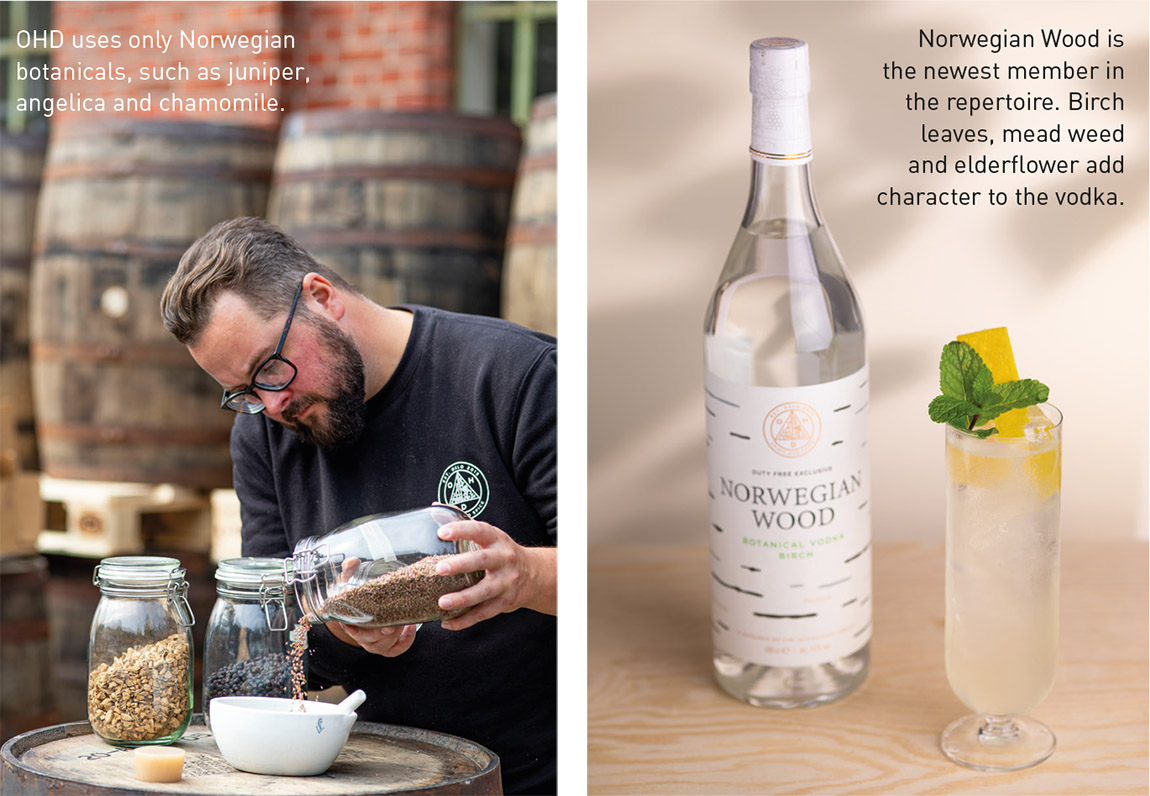
Web: www.oslohd.com Instagram: @ohd_the_oslo_distilleri
Subscribe to Our Newsletter
Receive our monthly newsletter by email

